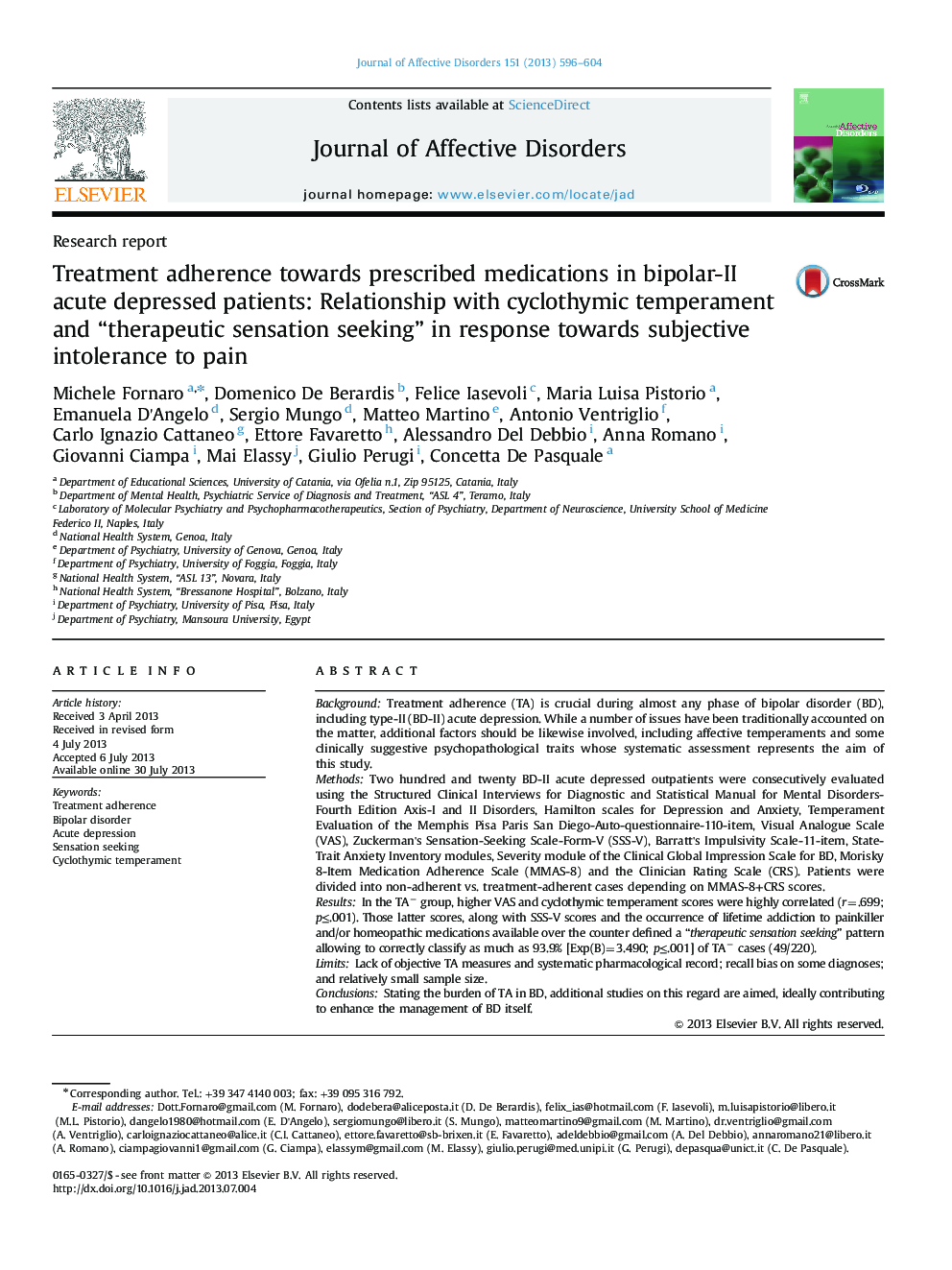| کد مقاله | کد نشریه | سال انتشار | مقاله انگلیسی | نسخه تمام متن |
|---|---|---|---|---|
| 6233933 | 1277554 | 2013 | 9 صفحه PDF | دانلود رایگان |

BackgroundTreatment adherence (TA) is crucial during almost any phase of bipolar disorder (BD), including type-II (BD-II) acute depression. While a number of issues have been traditionally accounted on the matter, additional factors should be likewise involved, including affective temperaments and some clinically suggestive psychopathological traits whose systematic assessment represents the aim of this study.MethodsTwo hundred and twenty BD-II acute depressed outpatients were consecutively evaluated using the Structured Clinical Interviews for Diagnostic and Statistical Manual for Mental Disorders-Fourth Edition Axis-I and II Disorders, Hamilton scales for Depression and Anxiety, Temperament Evaluation of the Memphis Pisa Paris San Diego-Auto-questionnaire-110-item, Visual Analogue Scale (VAS), Zuckerman's Sensation-Seeking Scale-Form-V (SSS-V), Barratt's Impulsivity Scale-11-item, State-Trait Anxiety Inventory modules, Severity module of the Clinical Global Impression Scale for BD, Morisky 8-Item Medication Adherence Scale (MMAS-8) and the Clinician Rating Scale (CRS). Patients were divided into non-adherent vs. treatment-adherent cases depending on MMAS-8+CRS scores.ResultsIn the TAâ group, higher VAS and cyclothymic temperament scores were highly correlated (r=.699; pâ¤.001). Those latter scores, along with SSS-V scores and the occurrence of lifetime addiction to painkiller and/or homeopathic medications available over the counter defined a “therapeutic sensation seeking” pattern allowing to correctly classify as much as 93.9% [Exp(B)=3.490; pâ¤.001] of TAâ cases (49/220).LimitsLack of objective TA measures and systematic pharmacological record; recall bias on some diagnoses; and relatively small sample size.ConclusionsStating the burden of TA in BD, additional studies on this regard are aimed, ideally contributing to enhance the management of BD itself.
Journal: Journal of Affective Disorders - Volume 151, Issue 2, November 2013, Pages 596-604